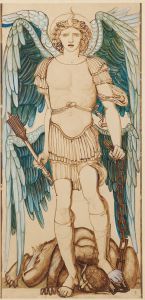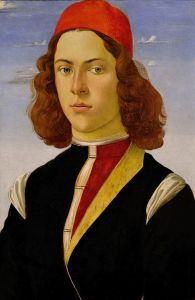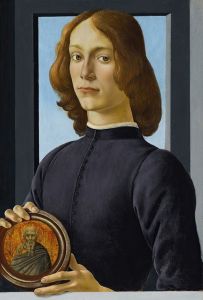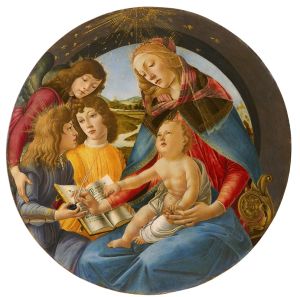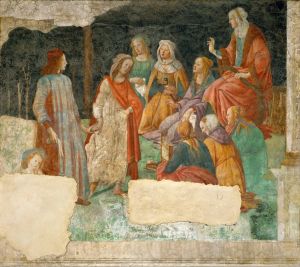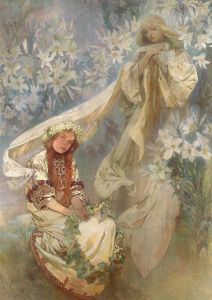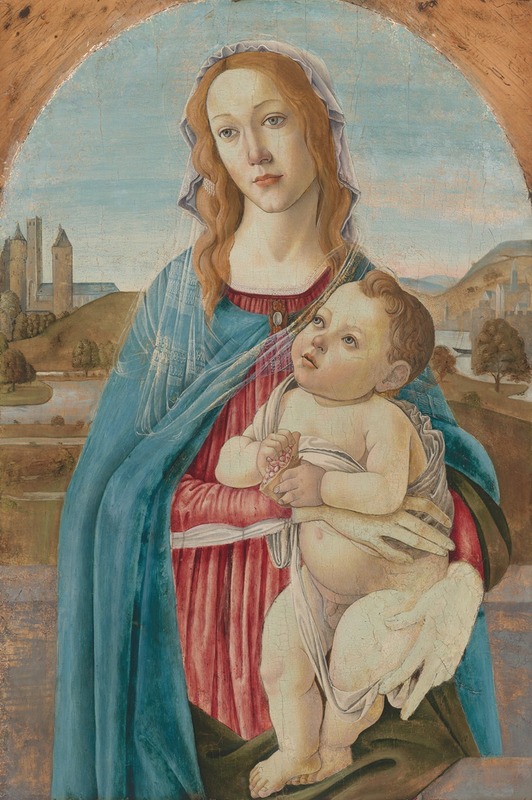
Virgin and Child
A hand-painted replica of Sandro Botticelli’s masterpiece Virgin and Child, meticulously crafted by professional artists to capture the true essence of the original. Each piece is created with museum-quality canvas and rare mineral pigments, carefully painted by experienced artists with delicate brushstrokes and rich, layered colors to perfectly recreate the texture of the original artwork. Unlike machine-printed reproductions, this hand-painted version brings the painting to life, infused with the artist’s emotions and skill in every stroke. Whether for personal collection or home decoration, it instantly elevates the artistic atmosphere of any space.
Virgin and Child by Sandro Botticelli is a notable example of the Italian Renaissance artist's work, reflecting the religious themes and stylistic elements characteristic of the period. Botticelli, whose full name was Alessandro di Mariano di Vanni Filipepi, was an influential painter in Florence during the late 15th century. He is best known for his mythological and religious subjects, and his work on the Sistine Chapel frescoes.
The painting Virgin and Child, like many of Botticelli's religious works, depicts the Madonna and Child, a common subject in Christian art that represents the Virgin Mary with the infant Jesus. This theme was particularly popular during the Renaissance, as it symbolized purity, motherhood, and the divine nature of Christ. Botticelli's interpretation of this subject is marked by his delicate use of line and color, as well as his ability to convey emotion and spirituality.
In Virgin and Child, Botticelli employs tempera on panel, a medium that was widely used during the Renaissance before the advent of oil painting. Tempera allowed for fine detail and vibrant colors, which Botticelli used to great effect. His technique involved applying thin layers of paint to build up depth and luminosity, a method that contributed to the ethereal quality of his figures.
The composition of Virgin and Child is notable for its balance and harmony. Botticelli often arranged his figures in a pyramidal structure, a common compositional device in Renaissance art that creates a sense of stability and focus. The Virgin Mary is typically depicted with a serene and contemplative expression, her gaze directed either at the child or towards the viewer, inviting contemplation and devotion. The Christ Child is often shown in a playful or affectionate pose, emphasizing his humanity and the tender relationship between mother and child.
Botticelli's use of symbolism is also evident in Virgin and Child. He often included elements such as flowers, fruits, or birds, which held specific meanings in Christian iconography. For example, roses might symbolize the Virgin's purity, while a pomegranate could represent the resurrection of Christ. These symbols added layers of meaning to the work, allowing viewers to engage with the painting on both an aesthetic and intellectual level.
The influence of Botticelli's teacher, Filippo Lippi, is apparent in Virgin and Child. Lippi's emphasis on graceful figures and delicate features can be seen in Botticelli's work, as well as his use of soft, flowing drapery to enhance the sense of movement and life. Botticelli's own unique style, however, is distinguished by his linear grace and the emotional depth of his figures.
Virgin and Child by Sandro Botticelli remains an important work within the canon of Renaissance art. It exemplifies the artist's skill in combining technical precision with expressive content, creating a piece that is both visually stunning and spiritually profound. Botticelli's ability to convey the divine through human form continues to resonate with audiences, making his work timeless and universally admired.






